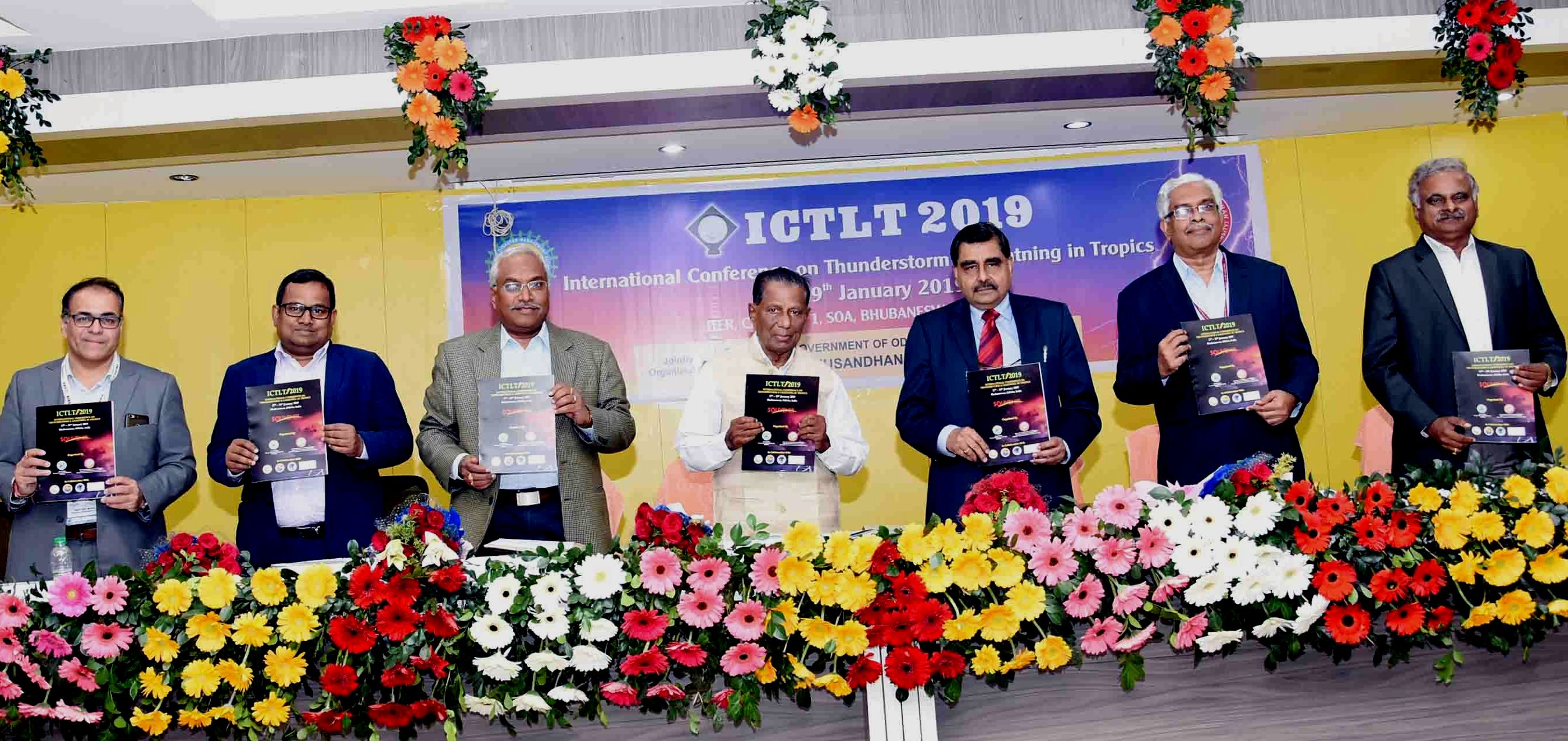Bhubaneswar: The Central government is developing a Common Alerting Protocol (CAP) to warn people about impending thunderstorm and lightning activity in a particular area, said the Director General of India Meteorological Department (IMD), Dr KJ Ramesh on Thursday.
“The model has already been tested and a message could be sent into all active cell phones in a particular area alerting people about the possibility of lightning,” Ramesh said at the International Conference on Thunderstorm and Lightning in Tropics (ICTLT) which began at the SOA Deemed to be University here.
Prediction of thunderstorm and lightning would be possible by studying satellite and radar pictures and collating data from other sources, he said.
The three-day conference, being attended by over 200 scientists, researchers, academicians, planners and other stakeholders from India and several other countries including USA and South Africa, has been jointly organised by the Odisha State Disaster Management Authority (OSDMA) and Centre for Environment and Climate (CEC), SOA Deemed to be University, in collaboration with other organizations.
The event was inaugurated by Odisha’s minister for higher education and industries, Ananta Das, who urged researchers to find solutions to nature’s fury as lightning caused 1560 deaths in the state within the last four years.
Stating that he had witnessed the death of three youths who were struck by lightning, the Minister said nature’s behaviour had become erratic and Odisha was prone to many extreme weather events including thunderstorm, lightning, heavy rainfall, heat wave, cyclone and flood.

Complimenting the Odisha government for initiating proactive steps in building proper infrastructure to ensure the safety of people during natural hazards, Ramesh said the administration had built a large number of cyclone shelters along the coast which were maintained very well.
“The government has been trying to improve matters and was working closely with IMD,” he said, adding the media would need to play a crucial role in spreading information and creating awareness to empower the people against natural calamities.
In his address, Special Relief Commissioner (SRC), Odisha, Bishnupada Sethi said the ICTLT had been organised to attract national attention on natural hazards like lightning and find methods to manage such events better. “Odisha had suffered a loss of Rs 72,000 crore due to damage to infrastructure following natural calamities during the last 24 years which we have not been able to recoup,” he noted.
Lightning alone had resulted in over 5000 deaths in the state since the super cyclone of 1999, the SRC said, adding most of such casualties occurred in the months between April and September.
He also said that the researchers should find out as to why some Odisha districts like Deogarh were less susceptible to lightning compared to the districts like Mayurbhanj and Balasore which accounted for most number of deaths.
The state government had set up the OSDMA in the aftermath of the 1999 super cyclone to cope with such situations and efforts were on to strengthen the mitigation machinery and emergency response to natural calamities.
Dr MN Rajeevan, secretary, Ministry of Earth Sciences and chairman, Earth System Science Organization (ESSO), said though Odisha was vulnerable to natural calamities it had emerged as a model in disaster management.
Referring to thunderstorms and lightning, he said it was difficult to predict such natural hazards because of their brief lifespan. The Indian Institute of Tropical Meteorology (IITM), Pune and ESSO had developed an app known as ‘Damini’ which could monitor all lightning activities and alert the people.
There was a need for extensive research in this area and the Ministry of Earth Sciences was going ahead with a research project on thunderstorms in the north-east, he said. Besides, a research station on monsoon is being set up at Bhopal, Rajeevan said.
In his address, Prof Dev Niyogi of Purdue University, USA, said he was impressed by the concerted efforts being made at different levels and the pathway being laid by local agencies to tackle such complex phenomena as thunderstorm and lightning.
Pointing out that systems which could withstand extreme weather events had not been built, Prof RV Rajakumar, Director, IIT, Bhubaneswar said the thrust was on developing the right infrastructure design.
Among others, Prof UC Mohanty, Emeritus Professor, IIT, Bhubaneswar and Prof Amit Banerjee, Vice-Chancellor, SOA, also spoke.
The conference has been supported by Bhubaneswar chapter of Indian Meteorological Society, Indian Institute of Tropical Meteorology, Pune, Earth Networks, USA and RIMES, Bangkok.


